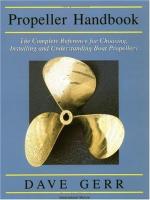|
This section contains 2,306 words (approx. 8 pages at 300 words per page) |

|
 The air pressure created by the clown's lungs on the inner walls of the balloon force it to expand. (Corbis Corporation)
The air pressure created by the clown's lungs on the inner walls of the balloon force it to expand. (Corbis Corporation)
A propeller converts through helical motion the energy supplied by a power source into thrust, a force that moves a vehicle forward in a fluid medium. They are used primarily for marine and aerial propulsion, but they are found on other technologies such as hovercraft and wind turbines as well. Propellers, which are essentially a series of twisted wings, or blades, connected to a central hub, are efficient energy transmission devices for those applications. The blades strike the air or water at a certain angle, called the pitch, and create an area of low pressure in front of the propeller. As a result, the blades generate thrust through either fluid or aerodynamic means by pushing forward through the low-pressure area. Slip, or the energy lost as the...
|
This section contains 2,306 words (approx. 8 pages at 300 words per page) |

|


